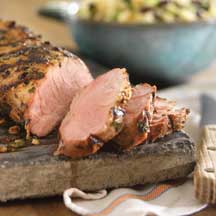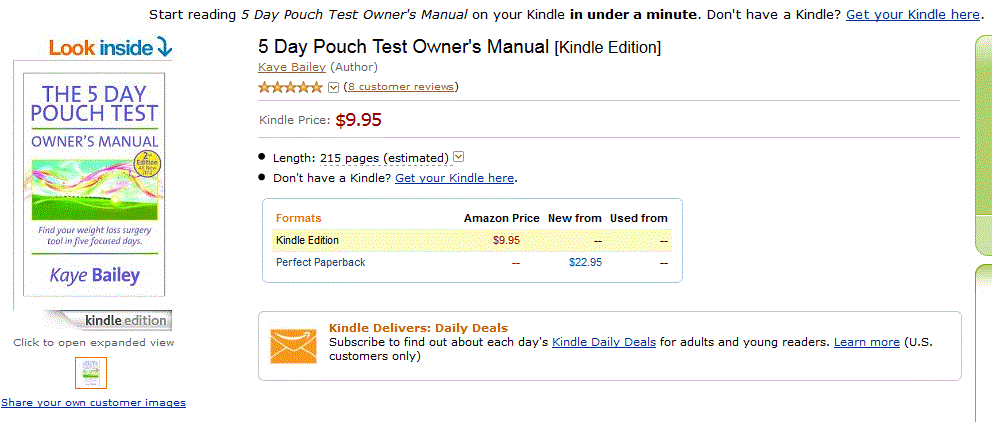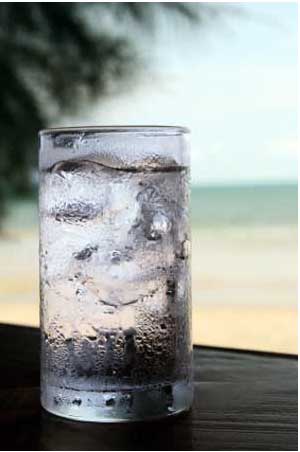
From the National Pork Board: Pork Be Inspired
According to a new study published in the February journal Obesity, Purdue University researchers found that including protein from lean pork in your diet can help you lose weight while maintaining more lean tissue, including muscle. The pork dieters rated themselves more positively in terms of overall mood and feelings of pleasure during dieting compare to those who ate less protein.
Banish Diet Cravings
The women in the study followed either a high-protein diet or a normal-protein diet but the same amount of calories. The women who ate more protein, with pork as their only source of meat, felt fuller longer after meals.
Did You Know?
Pork truly is The Other White Meat®! According to a recent analysis by the US Department of Agriculture, pork tenderloin contains the same amount of fat and slightly less calories than the same serving of skinless chicken breast. What's more, the same analysis found there are six cuts of pork that are considered either extra lean or lean by labeling standards. Now dieters have more options than ever to make lean, healthy choices when planning meals.
Tired of Chicken and Fish?
The high-protein diet included 6 ounces, or two servings, of pork every day. It's easy to reach this goal by including lean cuts of pork like Canadian bacon with your eggs for breakfast, adding grilled or sautéed pork chop strips to your salad at lunch, or roasting pork tenderloin for dinner. Plus, PorkBeInspired.com is packed with recipes for every meal.
According to a new study published in the February journal Obesity, Purdue University researchers found that including protein from lean pork in your diet can help you lose weight while maintaining more lean tissue, including muscle. The pork dieters rated themselves more positively in terms of overall mood and feelings of pleasure during dieting compare to those who ate less protein.
Banish Diet Cravings
The women in the study followed either a high-protein diet or a normal-protein diet but the same amount of calories. The women who ate more protein, with pork as their only source of meat, felt fuller longer after meals.
Did You Know?
Pork truly is The Other White Meat®! According to a recent analysis by the US Department of Agriculture, pork tenderloin contains the same amount of fat and slightly less calories than the same serving of skinless chicken breast. What's more, the same analysis found there are six cuts of pork that are considered either extra lean or lean by labeling standards. Now dieters have more options than ever to make lean, healthy choices when planning meals.
Tired of Chicken and Fish?
The high-protein diet included 6 ounces, or two servings, of pork every day. It's easy to reach this goal by including lean cuts of pork like Canadian bacon with your eggs for breakfast, adding grilled or sautéed pork chop strips to your salad at lunch, or roasting pork tenderloin for dinner. Plus, PorkBeInspired.com is packed with recipes for every meal.













 hare
with me. While summer for me offers abundant opportunity to be more
active than any other season, it also poses a problem for me. High
temperatures and bright sunshine spur cravings for a refreshing iced
Diet Coke with a squeeze of lemon. This was my mainstay beverage before
weight loss surgery and now and again I find myself indulging in that
old refreshing thirst quencher.
hare
with me. While summer for me offers abundant opportunity to be more
active than any other season, it also poses a problem for me. High
temperatures and bright sunshine spur cravings for a refreshing iced
Diet Coke with a squeeze of lemon. This was my mainstay beverage before
weight loss surgery and now and again I find myself indulging in that
old refreshing thirst quencher.  et, cook both scallops and shrimp for a seafood extravaganza. We found
the scallops were just as good the second day, served at room
temperature atop the salad.
et, cook both scallops and shrimp for a seafood extravaganza. We found
the scallops were just as good the second day, served at room
temperature atop the salad.